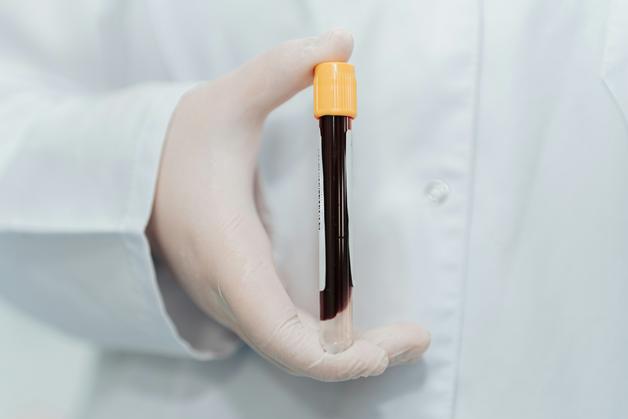Far from being just another medical specialist, the pediatrician is a cornerstone of children’s well-being—an unwavering presence bridging the worlds of science and compassion. Parents may often wonder, “Is this rash harmless?” or “Does my child’s growth chart really matter?” Such questions multiply as children move from infancy through adolescence. If you find yourself poring over late-night concerns or seeking clarity on stacking vaccination cards, a pediatrician is your frontline ally—trained to decode symptoms, answer the lingering “what ifs,” and support healthy development across every season of childhood. Together, we’ll reveal how pediatricians anchor preventive care, manage illnesses ranging from the trivial to the rare, and empower families with genuine, research-backed advice. Expect to better understand what differentiates pediatricians from other doctors, why physiology and developmental milestones are so closely observed, and how specialized guidance evolves as your child grows and flourishes.
The Pediatrician’s Role: More Than a Child Doctor
Who hasn’t wondered—what, exactly, sets a pediatrician apart from the many doctors you might meet? The answer threads through years of distinctive training and a singular focus: mastering the biology, psychology, and unique health patterns of patients from birth to young adulthood. Unlike those who treat all ages, a pediatrician is a “child health specialist”—think guardian of “growth monitoring,” attentive to subtle shifts in development, ever watchful for signs of chronic illness or behavioral changes that might elude a generalist. Whether exploring the nuances of preventive care or explaining how immune systems mature over time, pediatricians operate at the crossroads of medicine and family life, always adjusting their approach to speak both to the child and to the concerned parent at their side.
But the spectrum stretches further: from regular checkups in a bustling clinic (where stethoscope and measuring tape are wielded with equal authority), to the hushed intensity of a neonatal intensive care unit (NICU), each encounter is shaped by the pediatrician’s commitment to “developmental milestones” and early detection. The “wellness visit” might seem routine—height, weight, perhaps a few quick reflex tests—but inside these moments, pediatricians gather vital clues about underlying health, emotional adjustment, and learning abilities. The line dividing general pediatricians from subspecialists—like pediatric oncologists or endocrinologists—marks a leap into even deeper expertise, guiding care for children whose medical needs extend beyond the usual.
The Story Behind Pediatrics: From Ancient Insights to Modern Science
Pause for a moment on history’s long arc. While ancient healers hinted that children aren’t simply “small adults,” the formal idea of pediatrics took root centuries later. Envision 1700s Europe: the establishment of dedicated children’s hospitals such as the Hôpital des Enfants Malades, where physicians began tracking and battling childhood infectious diseases. With time, scientific advances—especially in vaccination and the understanding of nutrition—sent child mortality rates plummeting. Fast-forward to today, and you’ll find medicine embracing the psychosocial aspects—how stress, family structure, and school environment shape mental health and development.
Specialties like neonatology (for the world’s tiniest preemies) and adolescent medicine (focused on the stormy waters of puberty and emotional changes) continue to push boundaries. Yet, at every stage, new research rewires the map of what it means to protect growing bodies and minds, weaving together prevention, quick response, ethical reflection, and holistic care.
What Pediatricians Really Do: Preventive Care and Acute Solutions
What might a day look like for your pediatrician? One hour, checking a newborn’s reflexes and listening for heart murmurs. The next, talking through adolescent mood swings or evaluating persistent abdominal pain. But underneath is one constant: the vigilance to anticipate problems before they entrench, and a commitment to “immunizations,” screening for both physical and behavioral concerns, and supporting families facing diagnoses from mild allergies to rare genetic disorders.
Consider the layered approach—routine wellness visits punctuated by targeted screenings for vision, hearing, or nutrition-related issues. “Growth charts” aren’t just numbers; they’re maps marked with tiny signposts warning of possible endocrine shifts or nutrition gaps. When illness strikes—whether a sudden fever spikes or chronic asthma flares—a pediatrician interprets symptoms using child-centered science: weight-based dosing, differential diagnosis attuned to developmental physiology, and the kind of explanations that allow parents to step off the “Google deep dive” and trust evidence.
Care from Birth to Young Adult: A Continuous Spectrum
From that first breath after delivery, pediatricians become a steady companion—assessing “newborn screening tests” (catching silent metabolic or hearing conditions), tracking weight gain, and ensuring feeding gets off to a stress-free start. Infancy is a period of rapid immunizations, frequent visits, and constant monitoring for those elusive but pivotal “developmental milestones”: first smile, first steps, first words.
With school years, the focus evolves—attention turns toward learning challenges, vision and auditory sharpness, peer relationships, and the first stirrings of independence. Adolescence introduces new terrain: mood variability, reproductive health, risk-taking behaviors, and identity exploration. The journey through puberty is not merely physical, and a skilled pediatrician knows to listen, not just measure and prescribe.
Importantly, when the transition to adult health care nears (usually between ages 18–21), pediatricians help bridge the gap, sharing histories and equipping families (and young adults themselves) for the next phase—always careful to preserve continuity for chronic health concerns or emotional support systems that matter.
Pediatrician Training: Why the Path Is So Rigorous
Here’s what parents often underestimate—the long, rigorous road to becoming a pediatrician. After the typical undergraduate degree, four demanding years of “medical school” unfold, where anatomy, pharmacology, and clinical reasoning become second nature. This is followed by a three-year “pediatric residency” spent in hospitals and clinics, managing both everyday coughs and the rarest childhood cancers. The journey doesn’t always stop there. Many pursue subspecialty “fellowships” in areas like cardiology, endocrinology, or emergency medicine, expanding both technical skill and scientific understanding.
Yet, “expertise” isn’t static. Board certification demands ongoing learning, frequent recertification, and regular “continuing medical education.” The goal? Care that matches—or exceeds—the latest international standards in pediatric health.
When Subspecialists Step In: Deep Focus on Complex Needs
For most, the general pediatrician suffices. But sometimes, a child’s symptoms call for deeper inquiry. Imagine a premature baby requiring neonatal intensive care. Or a teen newly diagnosed with type 1 diabetes, suddenly navigating hormonal changes and glucose control. Subspecialists exist for these moments—neonatologists orchestrate care in NICUs, pediatric cardiologists manage congenital heart conditions, oncologists wage war against childhood cancers, while those trained in developmental-behavioral pediatrics chart a course through attention disorders or learning delays.
Each holds advanced knowledge tailored not only to disease, but to the unique physiology of children—meaning medications, interventions, and even bedside manner require bespoke adjustments. Collaboration with the primary pediatrician ensures no detail slips through, and families receive unified, clear plans.
Children Are Not Small Adults: Physiology and Developmental Precision
A truism that upends assumptions: children’s bodies are in flux. Kidney and liver function, hormone levels, immune responses—all behave differently than in adulthood, affecting how symptoms reveal themselves, how tests are interpreted, and which treatments will be safe and effective. Glucose in a child’s urine, for instance, might represent temporary shifts or metabolic adaptation, not necessarily diabetes. Subtle changes in laboratory values hold different meanings at various ages.
This understanding is where your pediatrician’s precision shines—knowing the cutoff for “normal,” recognizing when a result signals danger, and, just as important, when to spare a child from unnecessary interventions. Their goal remains clear: focus resources where benefit outweighs risk, remain alert for early disease, and ensure no worrying sign is ignored or hastily dismissed.
Family Support and Practical Advice: Adapting Daily Life
Every family, every child—brings their own challenges. Maybe it’s a routine that’s fallen apart after an unexpected test result or a new diagnosis upending old mealtime habits. Pediatricians aim first for clarity: explaining lab results, addressing next steps, and—perhaps the rarest resource—offering genuine reassurance or redirection as appropriate. Sometimes, it’s basic: balanced nutrition, movement, and sleep hygiene. Other times, it’s specific: daily symptom monitoring, medication technique, or adapting physical activity to unique restrictions.
Effective support rarely means strict rules. Instead, pediatricians adjust strategies, sometimes referring to specialized therapists, sometimes arming parents with symptom trackers or trustworthy online tools. The philosophy? Empower parents as full partners—knowledgeable, calm (if sometimes a bit anxious), and always listened to.
Prevention and Early Action: Keeping Wellness on Track
Prevention forms the sturdy backbone of pediatric medicine. The drive to anticipate—not merely react to—health risks means exploring family medical histories, watching closely for weight or metabolic shifts, and screening when known risks arise. Whether it’s advice on nutrition, structured activity, or immunization, the pediatrician’s role is partly strategist, partly motivator. For those wrestling with higher risk (hereditary metabolic disorders, for instance), early guidance underpins confidence and quick response when challenges surface.
Wellness checkups present opportunities—not just to tick boxes or fill in charts—but to uncover hidden vulnerabilities and build long-term, healthy routines day by day, year by year.
When to Consult a Pediatrician: Knowing the Signs
The rhythm starts soon after birth, with frequent well-child visits pacing out through toddlerhood and beyond. But not everything waits for an annual check-up. High fevers, convulsions, labored breathing, persistent vomiting, or sudden behavior shifts such as confusion or listlessness demand immediate attention. At the same time, more ambiguous issues—delays in speech, persistent fatigue, changes in growth patterns—are equally worth raising.
Pediatricians don’t just hunt for obvious disease. Their deep familiarity with “developmental screening,” growth norms, and family context allow them to spot subtler concerns, mapping out early intervention, guiding referrals, and giving practical advice tailored to each individual child and situation.
Choosing the Right Pediatrician for Your Family
Finding the pediatrician who matches your family isn’t just a matter of office hours or proximity. It’s a blend of training, communication style, and trust. Seek board certification (“Is your pediatrician specialized in child health?”), observe how questions are answered, and note whether your child feels comfortable, even during brief encounters. Examine the child-friendly office environment—are same-day appointments feasible? Is staff responsive?
Practicalities—like insurance coverage—always matter, but so do subtler dimensions: respectful conversation, transparent policies on emergencies, clear vaccine scheduling. Above all, a pediatrician should feel like a partner—receptive, clinically sharp, but also patient with small anxieties and big questions.
The Vital Role of Family Education
Education is woven through every pediatric visit. Whether it’s reviewing sleep routines, correcting feeding myths (“Does my child really need a multivitamin?”), or discussing age-adjusted screen time, pediatricians act as reliable translators of medical science for everyday family life. They equip parents to foster safe sleep, set up supportive routines, and recognize hazards before they escalate—whether home accidents, car seat installation, or recognizing early infection.
A major theme? Vaccine safety and logic. Pediatricians hold the expertise to clarify the schedule, explain immune responses, and gently sort fact from fiction when hesitations arise, always balancing evidence with empathy. The end goal: parents who feel respected, well-informed, and able to support their child’s journey through all stages of development.
Ethics, Autonomy, and Giving Children a Voice
Ethical pediatric care balances “informed consent” (typically from parents) with the growing autonomy of children. Whenever possible, pediatricians pursue “assent”—helping children participate in their own care, suited to their comprehension and maturity. As issues grow more sensitive—especially in adolescence—confidentiality gains importance. Pediatricians skillfully alternate between parent involvement and private discussions with older children, always with an eye on welfare and respect.
For ethically intricate situations, teamwork prevails. Input from parents, other providers, and sometimes bioethics committees creates decisions firmly centered on the child’s best interest—never rushed, always transparent, and solidly evidence-based.
Innovations Shaping the Future of Pediatrics
Pediatrics is awash with fast-moving innovation. Telemedicine links distant families with expert care, shrinking wait times and minimizing travel. Wearable technology—smart insulin pumps, asthma inhaler sensors, growth tracking apps—make real-time monitoring approachable, easing parental concern and boosting response speed. Genetic testing enables early pinpointing of rare conditions; artificial intelligence helps pediatricians make sense of swelling data and spot patterns invisible to the human eye.
Personalized medicine is no longer a future promise—it’s a present-day tool guiding therapy for complex autoimmune disorders or childhood cancers. New vaccines and therapies continually shift the outlook for what once seemed unsolvable. The ultimate gain? More proactive, precise, and family-centered care—where every child benefits from the frontier of scientific progress.
Key Takeaways
- A pediatrician is a uniquely trained partner, supporting your child’s health from the first newborn assessment to late adolescence.
- Preventive care—immunizations, growth monitoring, developmental screening—is as vital as treatment during illness or after injury.
- Medical training and ongoing education empower pediatricians to address both common and rare conditions with confidence and clarity.
- Special attention to physiology, child development, and family dynamics sets pediatricians apart from other specialists.
- Prevention, early intervention, and evidence-based advice can reduce long-term health risks and support well-being.
- Choosing a pediatrician who aligns with your family ensures both expertise and trusted communication in every health journey.
- Resources and professionals are always available to accompany you: for personalized guidance and free child health questionnaires, you can download the Heloa app and discover tailored advice for any pediatric concern.
Questions Parents Ask
What is the difference between a pediatrician and a family doctor?
While both pediatricians and family doctors care for children, pediatricians have dedicated their studies and practice exclusively to the health of infants, children, and adolescents. This means their expertise is deeply focused on child development, child-specific illnesses, and age-appropriate prevention. Family doctors see patients across all ages and can help your child, but pediatricians are especially attuned to children’s unique needs—physically, emotionally, and developmentally.
When should I stop taking my child to a pediatrician?
Most children see a pediatrician until late adolescence, typically between 18 and 21 years old. This timing can vary depending on individual health needs and local recommendations. Pediatricians are specially trained to address the health questions and developmental changes that come with adolescence. When your teen is ready to transition to adult care, your pediatrician will often help coordinate a smooth handover to a general practitioner or relevant specialist.
Can a pediatrician help with behavioral or emotional concerns?
Absolutely, pediatricians are well-placed to support not only physical health, but also behavioral and emotional wellbeing. They understand how emotions and stress can influence growth and learning. If you notice changes in your child’s mood, social interactions, or behavior, feel free to discuss these openly during a visit. Your pediatrician can offer guidance, suggest supportive resources, and, if necessary, connect you with mental health or developmental specialists. Rassurez-vous, seeking help for these topics is just as important as caring for physical health.

Further reading:









